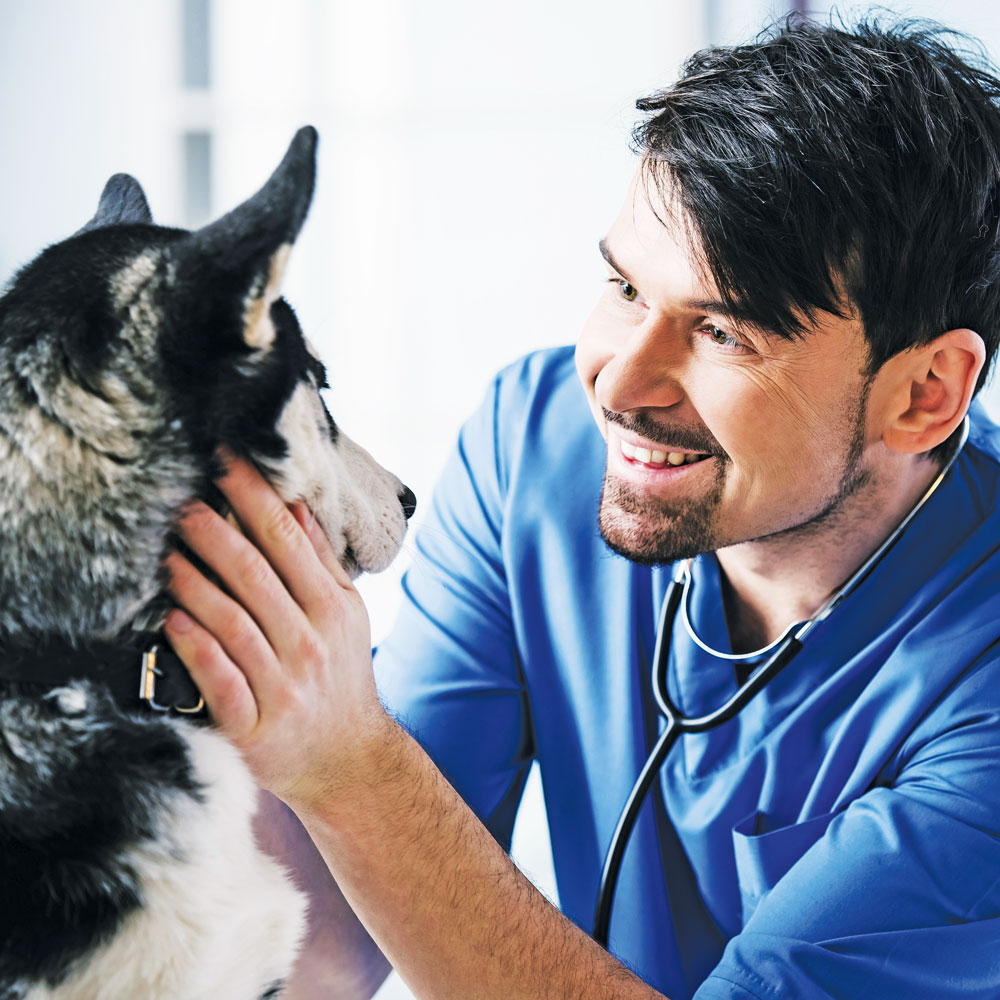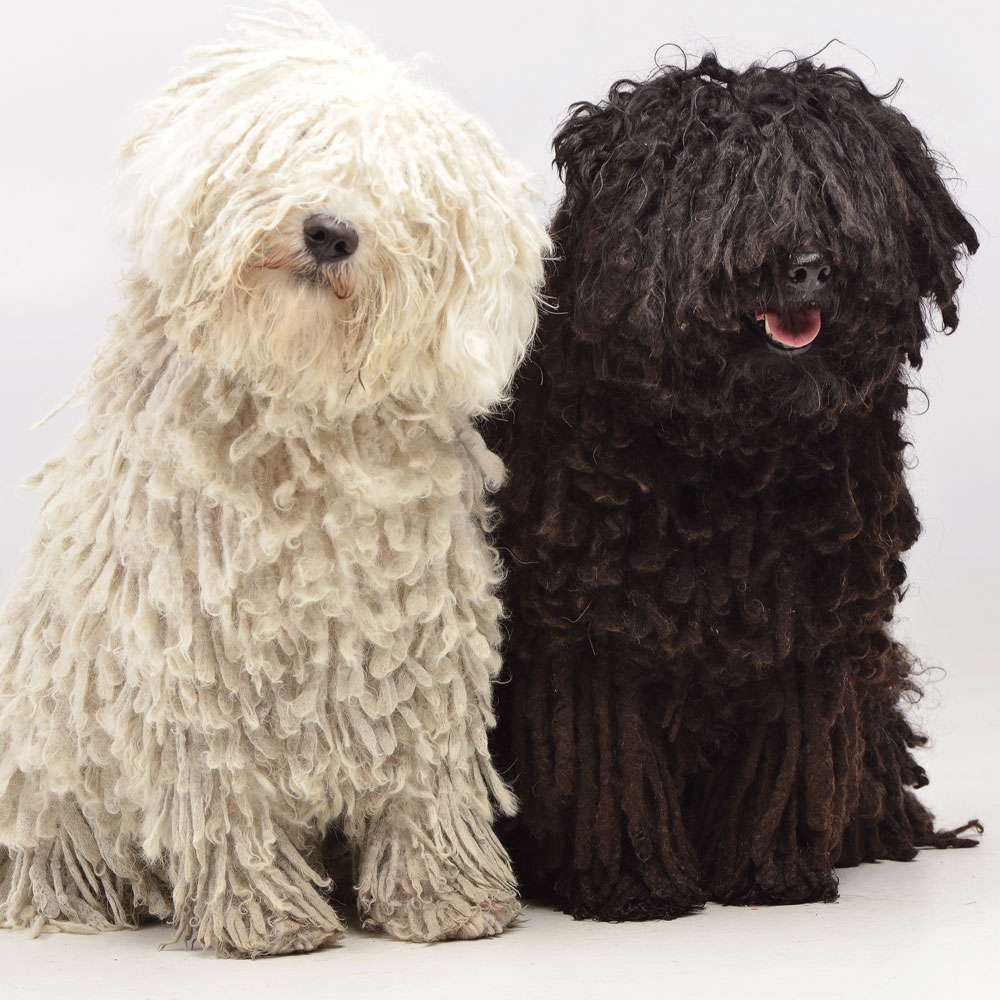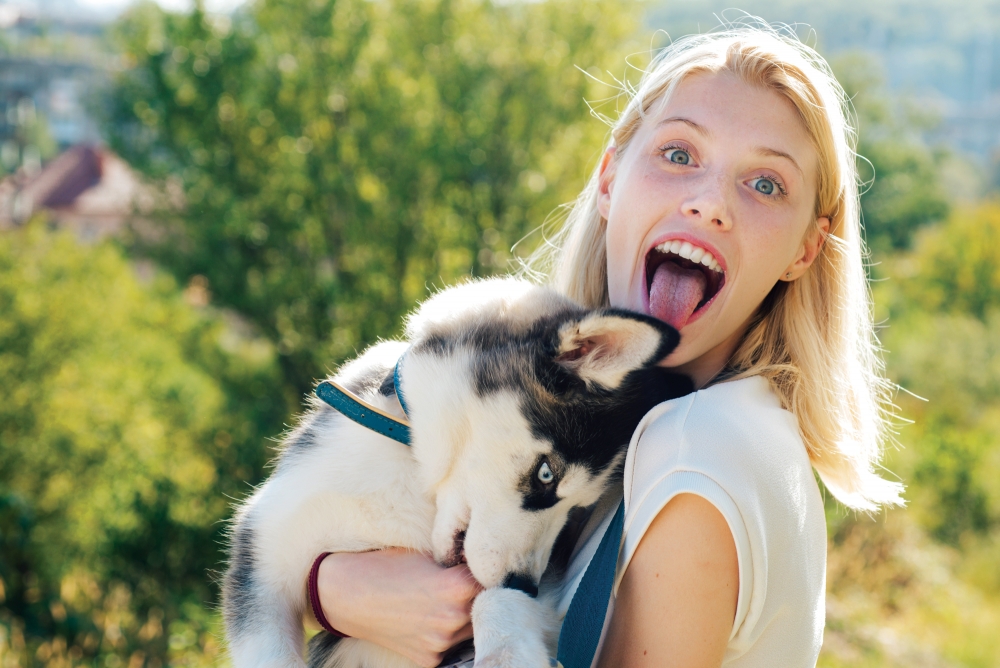
4 dog massage techniques to help your pup rest, relax, and rejuvenate
Ahhh—yeah—that’s the right spot, how to massage your dog! What’s that? No, it doesn’t hurt, it’s divine. Don’t stop now... Who doesn’t love a massage? You can’t beat something that feels so good and is good for you, too. Dog massage lowers blood pressure and reduces stress for both the giver and receiver and takes only minutes a day. Better yet, learning how to give your dog a massage is easy. And if you believe in karmic retribution, just think of all those massages waiting for you down the road!
Daily Dog Massage
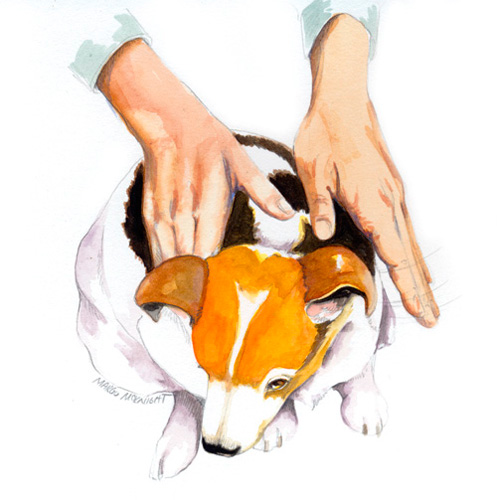
In just ten minutes a day, you can give your dog a “maintenance” massage. Use a flat palm to slowly touch all the parts of your dog’s body. Really focus on what you are feeling and pay attention to all the layers, from hair through skin, fat, muscle, and down to bone. Meanwhile, Liverlover is basking in the attention and loving the extra “petting.” However, there is more to these massages than just quality time together. After a few days, you will have a clear picture of what is normal for your dog’s body. In future sessions, you will be quick to notice any differences in surface temperature, sensitivity to touch, localized swelling or muscle tension, poor coat quality or tight skin. Left undetected, these things can lead to problems requiring medical care, medications, or even surgery. Knowing what feels normal for your dog can also help you provide better information for your veterinarian, trainer, or massage practitioner. This is one way that regular massage can add to the length and quality of your pet’s life.
How to Massage Your Nervous Dog To Calm Them
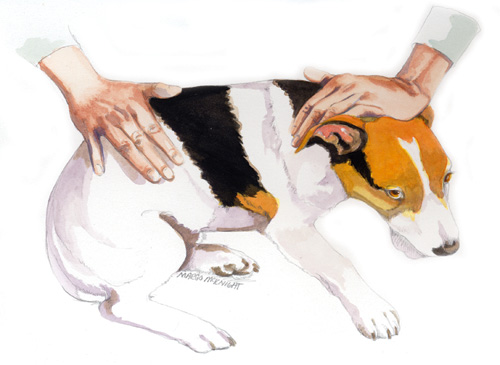
Oh, oh. The distant sound of thunder is rolling through your neighbourhood. Your dog begins to whine, roll his eyes, and pant. He dives under your bed. Is there anything you can do to reduce his stress? Massage may be the answer. Massage therapists use a stroke similar to petting to relax the nervous system. Lightly rest the flat palm of your hand on top of your dog’s head or neck. Make long, sweeping passes along the length of the spine and down the tail. Repeat this several times slowly. You can gradually increase your pressure if your dog likes it. Do not press straight down on the lower part of the back. To finish, allow one hand to rest at the base of your pet’s head and the other hand to rest over the area of the pelvis (the high point over your dog’s hips). These two areas correspond to the part of the spinal cord that controls the rest and relaxation responses of the body (for example, sleep, digestion, and tissue repair). This technique is useful any time your dog is nervous or fearful, such as during nail trimming or vaccinations, or when he is hyperactive or restless.
Warm-Up Massage for Active Dogs
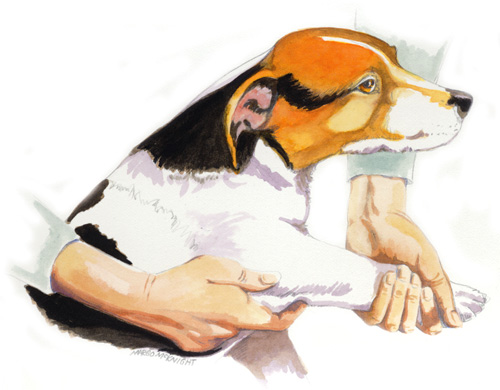
If you work out or play a sport, you’ve likely been told many a time that warming up your body is a vital part of your fitness routine. Active dogs that compete, run, hike with their owners, or just play hard also deserve a good warm-up, and it may even prevent injury. Start with several minutes of petting strokes over your dog’s entire body. Briskly rub the large muscles (neck, shoulders, buttocks, and thighs) with the heel of your hand. Gently lift and squeeze the muscles. The technique is a lot like kneading bread dough. Wrap your fingers around each lower leg and squeeze gently. Relax your grip and move up Warm-up for active dogs the leg gradually, squeezing as you go. Finish with more petting over the entire body to stimulate the nerves.
Relieving Joint Stiffness and Soreness With Dog Massage
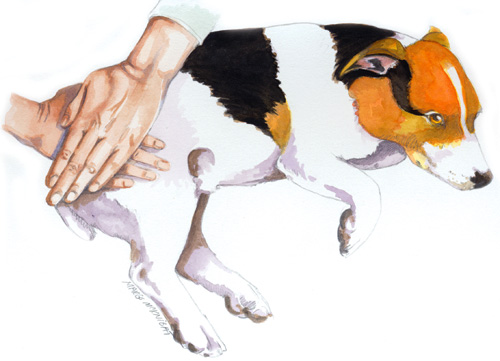
The weekend was great—on Saturday, Tex ran with the gang for hours at the dog park. Then, on Sunday, you two hiked all day. But Monday doesn’t look so good. Tex is limping from couch to water dish, and declining your invitations to play. Ouch! Recent exertion, aging, or inactivity can lead to soreness and stiffness in joints and muscles. To help, start by petting the area around the joint to warm the tissue. Then place your hand(s) over the area and apply gentle compressions over the area. You can use your breathing or count slowly to establish a rhythm as you press and release the muscles. The pumping motion moves fluids through the muscles and takes tension off the tendons surrounding the joint. Never use sudden or direct force over a bone. Finish with more petting over the area to soothe the nerves. Keep in mind that regular massage throughout the life of your pet may help prevent the stiffness and pain that contributes to arthritis. Readers should note that knowing how to massage your dog is not a substitute for veterinary care. Severe conditions require diagnosis and treatment by your veterinarian.

 1. Yogurt is a good source of available calcium and protein. When choosing yogurt, pick one that has live active bacteria and no sugars or artificial sweeteners. The active bacteria may act as probiotics. If your pooch is pudgy, make sure that you pick fat-free yogurt but not one that contains fat substitutes (e.g., Simplesse or Olestra). Frozen yogurt is a nice summer treat for dogs.
1. Yogurt is a good source of available calcium and protein. When choosing yogurt, pick one that has live active bacteria and no sugars or artificial sweeteners. The active bacteria may act as probiotics. If your pooch is pudgy, make sure that you pick fat-free yogurt but not one that contains fat substitutes (e.g., Simplesse or Olestra). Frozen yogurt is a nice summer treat for dogs.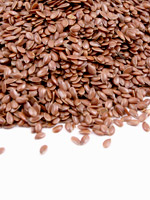 2. Flax seed (ground or oil) is a good source of omega-3 fatty acids, which are essential fatty acids that are good for skin and coat. Whole flax seeds are best if ground right before feeding as this type of fat can go rancid quickly. Flax seed can also be added to your dog’s diet as a source of fibre. Flax oil is a more concentrated form of omega- 3 fatty acids without the fibre. Make sure that you store the oil or seeds in the fridge in an air tight dark container.
2. Flax seed (ground or oil) is a good source of omega-3 fatty acids, which are essential fatty acids that are good for skin and coat. Whole flax seeds are best if ground right before feeding as this type of fat can go rancid quickly. Flax seed can also be added to your dog’s diet as a source of fibre. Flax oil is a more concentrated form of omega- 3 fatty acids without the fibre. Make sure that you store the oil or seeds in the fridge in an air tight dark container.  3. Salmon is a fatty fish which is also a good source of omega- 3 fatty acids. These fats support the immune system and can be beneficial for skin and coat health. There has also been some indication that they may benefit dogs with allergies. You can feed salmon or salmon oil. If feeding salmon, make sure it’s cooked before serving, as raw salmon can carry a parasite that can make your dog sick.
3. Salmon is a fatty fish which is also a good source of omega- 3 fatty acids. These fats support the immune system and can be beneficial for skin and coat health. There has also been some indication that they may benefit dogs with allergies. You can feed salmon or salmon oil. If feeding salmon, make sure it’s cooked before serving, as raw salmon can carry a parasite that can make your dog sick. 4. Pumpkin is a good source of fibre and beta carotene (a source of vitamin A). Dogs need fibre in their diet. The current trend is towards highly digestible diets that lower stool volume and this is not necessarily a good thing. Keeping the GI tract moving helps keep the cells lining the gut healthy.
4. Pumpkin is a good source of fibre and beta carotene (a source of vitamin A). Dogs need fibre in their diet. The current trend is towards highly digestible diets that lower stool volume and this is not necessarily a good thing. Keeping the GI tract moving helps keep the cells lining the gut healthy. 5. Sweet potatoes are another source of dietary fibre and contain vitamin B6, vitamin C, beta carotene, and manganese. Sweet potatoes are great sliced and dehydrated as a chewy treat for your dog. There are so many dog treats on the market that we often overlook the simple, healthy, and reasonably priced treats available at our grocery store.
5. Sweet potatoes are another source of dietary fibre and contain vitamin B6, vitamin C, beta carotene, and manganese. Sweet potatoes are great sliced and dehydrated as a chewy treat for your dog. There are so many dog treats on the market that we often overlook the simple, healthy, and reasonably priced treats available at our grocery store. 6. Green beans are a good source of plant fibre, vitamin K, vitamin C, and manganese. If your dog has a tendency to put on weight, then replacing some of her regular food with green beans is a great low calorie way to fill her up and help her maintain a healthy weight. Many dogs enjoy green beans frozen.
6. Green beans are a good source of plant fibre, vitamin K, vitamin C, and manganese. If your dog has a tendency to put on weight, then replacing some of her regular food with green beans is a great low calorie way to fill her up and help her maintain a healthy weight. Many dogs enjoy green beans frozen. 7. Eggs are a great source of very digestible protein, riboflavin, and selenium. For some dogs that are prone to digestive upset, eggs can give them a little protein boost. Adding eggs to your dog’s food is a healthy treat. Make sure to use cooked whole egg, as raw egg whites can cause biotin deficiency. If you do a lot of training with your dog, consider taking cooked eggs to your next class as training treats.
7. Eggs are a great source of very digestible protein, riboflavin, and selenium. For some dogs that are prone to digestive upset, eggs can give them a little protein boost. Adding eggs to your dog’s food is a healthy treat. Make sure to use cooked whole egg, as raw egg whites can cause biotin deficiency. If you do a lot of training with your dog, consider taking cooked eggs to your next class as training treats.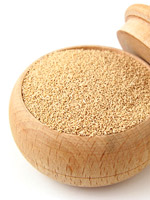 8. Brewer’s yeast is the yeast that’s left over from making alcohol. Dogs seem to really enjoy the tangy taste of brewer’s yeast. It’s full of B vitamins which are good for skin, coat, and carbohydrate metabolism. Make sure you’re using brewer’s yeast (available at health food stores), not baking yeast which will make your dog sick. Brewer’s yeast can spice up your dog’s appetite. Just sprinkle a little on the food of a picky eater and watch her dive into her food.
8. Brewer’s yeast is the yeast that’s left over from making alcohol. Dogs seem to really enjoy the tangy taste of brewer’s yeast. It’s full of B vitamins which are good for skin, coat, and carbohydrate metabolism. Make sure you’re using brewer’s yeast (available at health food stores), not baking yeast which will make your dog sick. Brewer’s yeast can spice up your dog’s appetite. Just sprinkle a little on the food of a picky eater and watch her dive into her food. 9. Apples are wonderful crunchy treats for your dog. Apples with the skin on are full of plant chemicals (phytonutrients) that are thought to be protective against some types of cancer in humans. They are a source of vitamins A and C and fibre. Apple seeds, however, contain cyanide so your dog should not be allowed to eat the core. Though the effects of a few apple seeds will likely not harm your dog, the deleterious effects can accumulate over time if allowed to eat apple seeds regularly. To safely feed your dog apples, slice the apples into smaller pieces and make sure no seeds are present in the pieces you're giving your dog. Another good idea is to start in small quantities so your dog can become accustomed to a new ingredient in their diet.
9. Apples are wonderful crunchy treats for your dog. Apples with the skin on are full of plant chemicals (phytonutrients) that are thought to be protective against some types of cancer in humans. They are a source of vitamins A and C and fibre. Apple seeds, however, contain cyanide so your dog should not be allowed to eat the core. Though the effects of a few apple seeds will likely not harm your dog, the deleterious effects can accumulate over time if allowed to eat apple seeds regularly. To safely feed your dog apples, slice the apples into smaller pieces and make sure no seeds are present in the pieces you're giving your dog. Another good idea is to start in small quantities so your dog can become accustomed to a new ingredient in their diet.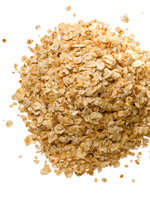 10. Oatmeal is a good source of soluble fibre. This can be beneficial for some older dogs that may have trouble maintaining bowel regularity. Oatmeal is also an alternative source of grain for dogs that are allergic to wheat. It can be fed in conjunction with probiotics to enhance their function. Keep in mind oatmeal
10. Oatmeal is a good source of soluble fibre. This can be beneficial for some older dogs that may have trouble maintaining bowel regularity. Oatmeal is also an alternative source of grain for dogs that are allergic to wheat. It can be fed in conjunction with probiotics to enhance their function. Keep in mind oatmeal 


 #
#
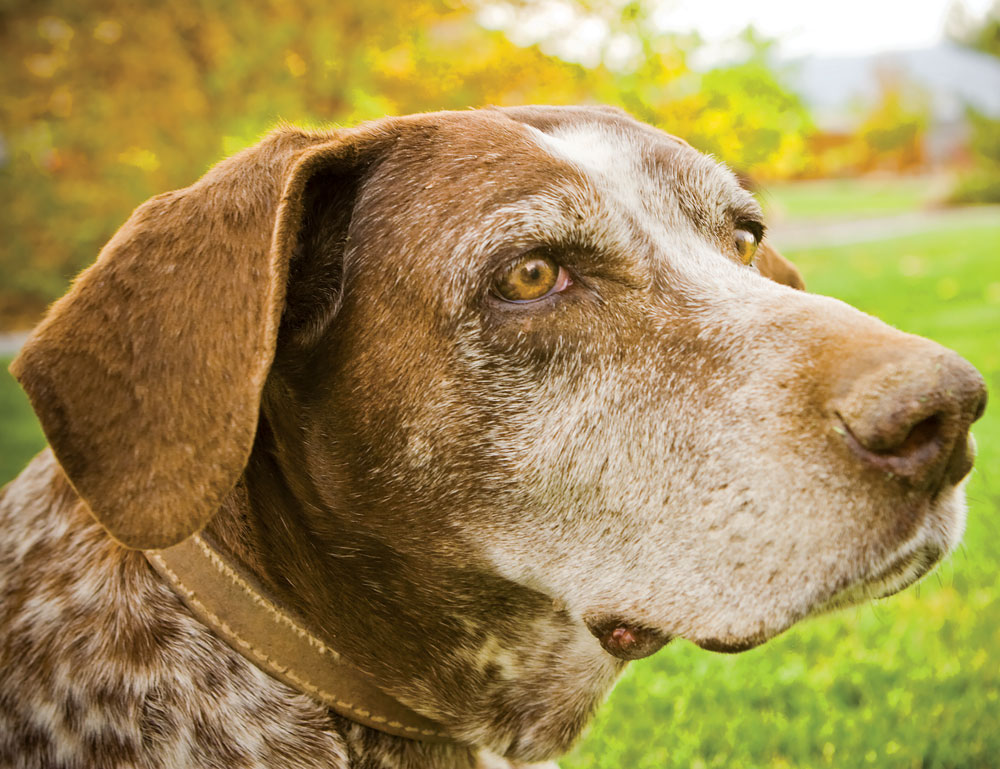 #
#

